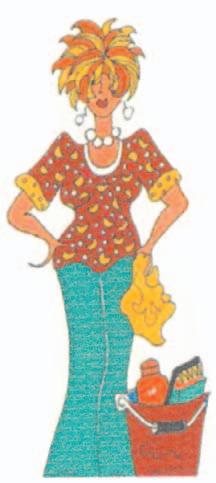
3 minute read
NCOA offers ideas to help older adults with expenses


The National Council on Aging, NCOA, shared a press release on ways older adults can access benefit programs to reduce their monthly expenses. The report shared a comment from Nasreen Hydari lamenting in a recent NCOA Facebook post saying, “It’s so pricey to buy produce and healthy foods.”
“I just paid $5 for a cantaloupe,” Susan Sweeney agreed, adding that “it’s getting harder to eat healthy.”
Given the ongoing pressures of inflation, these comments are sadly no surprise. According to the Consumer Price Index, the cost of food again rose by double digits in January 2023: up more than 10% over a year ago. And it doesn’t stop there. The same report shows that, compared to January 2022:
• Energy prices in general have risen nearly 9%.
• Fuel oil and piped gas now cost 27.7% and 26.7% more, respectively.
• Electricity is up 11.9%.
• Housing costs have risen nearly 8%.
And, while the costs for medical care have increased less rapidly, they, too, are more expensive this year than last: 3% more since January 2022. “It’s disheartening,” said Brandy Bauer, director of NCOA’s MIPPA Resource Center. “These expenses can quickly spiral out of control even for the most budget-minded, meticulous older adults.”
While Social Security benefits increased by 8.7% for 20232—a historic cost-of-living raise not seen in more than 40 years—those extra dollars are “effectively already spent” before they show up in beneficiaries’ pockets, Bauer added.
“One in four Americans who receive Social Security depend on it for 90% of their income,” she said. “When the costs of housing, medical care, prescription drugs, and food rise, it becomes harder and harder for these older adults to make ends meet, through no fault of their own.”
That’s why NCOA is committed to helping older Americans find and access crucial fi- nancial programs that help bridge the gap between income and daily living expenses. Every year, $30 billion in these benefits go unclaimed— often because those who are eligible either don’t know about them or are unsure how to apply. “And many people mistakenly think they’d be taking money away from someone who needs it more,” added Bauer. “Fortunately, that isn’t the case.”


Below are four programs to help older adults:
• SNAP: Get help paying for food. Once called Food Stamps, the Supplemental Nutrition Assistance Program (SNAP) is a vital lifeline for individuals and families who otherwise might face hunger, malnutrition, and the stress of not being able to put enough food on the table. As the largest anti-hunger program in the United States, SNAP helps many older adults stretch their budgets by providing a monthly stipend they can use at participating grocery stores, farmers’ markets, and other retail outlets that sell food. Each year, as many as 5 million older adults are missing out on $6.3 billion in SNAP assistance alone.
• LIHEAP: Get help paying for utilities. If you can’t afford to heat or cool your living space, the Low-Income Home Energy Assistance Program (LIHEAP) can offer relief—whether you own or rent. This federally sponsored, needs-based program helps millions of households across the country pay for home energy bills, certain energy-related repairs, and even some weatherization projects. LIHEAP also provides emergency financial assistance if you’re facing a shutoff.
• Medicare Savings Programs: Get help paying for health care. Medicare isn’t free, and out-of-pocket costs can add up quickly—especially for older adults who live with chronic conditions. That’s where Medicare Savings Programs (MSPs) come in. Sometimes called Medicare Buy-In Programs or Medicare Premium Payment Programs, these state-administered benefits are designed to ease the burden of certain expenses such as monthly premiums, deductibles, copayments, and coinsurance. Eligibility varies depending on where you live, as do the specific benefits available. That said, if you’re enrolled in an MSP, you are automatically eligible for Extra Help (see below). Between 2-3 million older adults who are eligible for an MSP either don’t know it or haven’t applied, which leaves as much as $5.9 billion on
2023 Pickin’ on the Square will be held on Saturday, July 8 and August 12 evenings from 5 pm – 7 pm. The event is free to the community. (photo provided) the table every year.
• Extra Help: Get assistance paying for prescription drugs. On average, Medicare beneficiaries spend as much as $500 of their own money each year on prescription medications. The Extra Help program, jointly administered by the Social Security Administration (SSA) and the Centers for Medicare & Medicaid Services (CMS), subsidizes the cost of these drugs for older adults with limited income and assets. Additional benefits may also include zero premiums on Medicare Part D prescription plans and limited out-of-pocket costs at the pharmacy.












